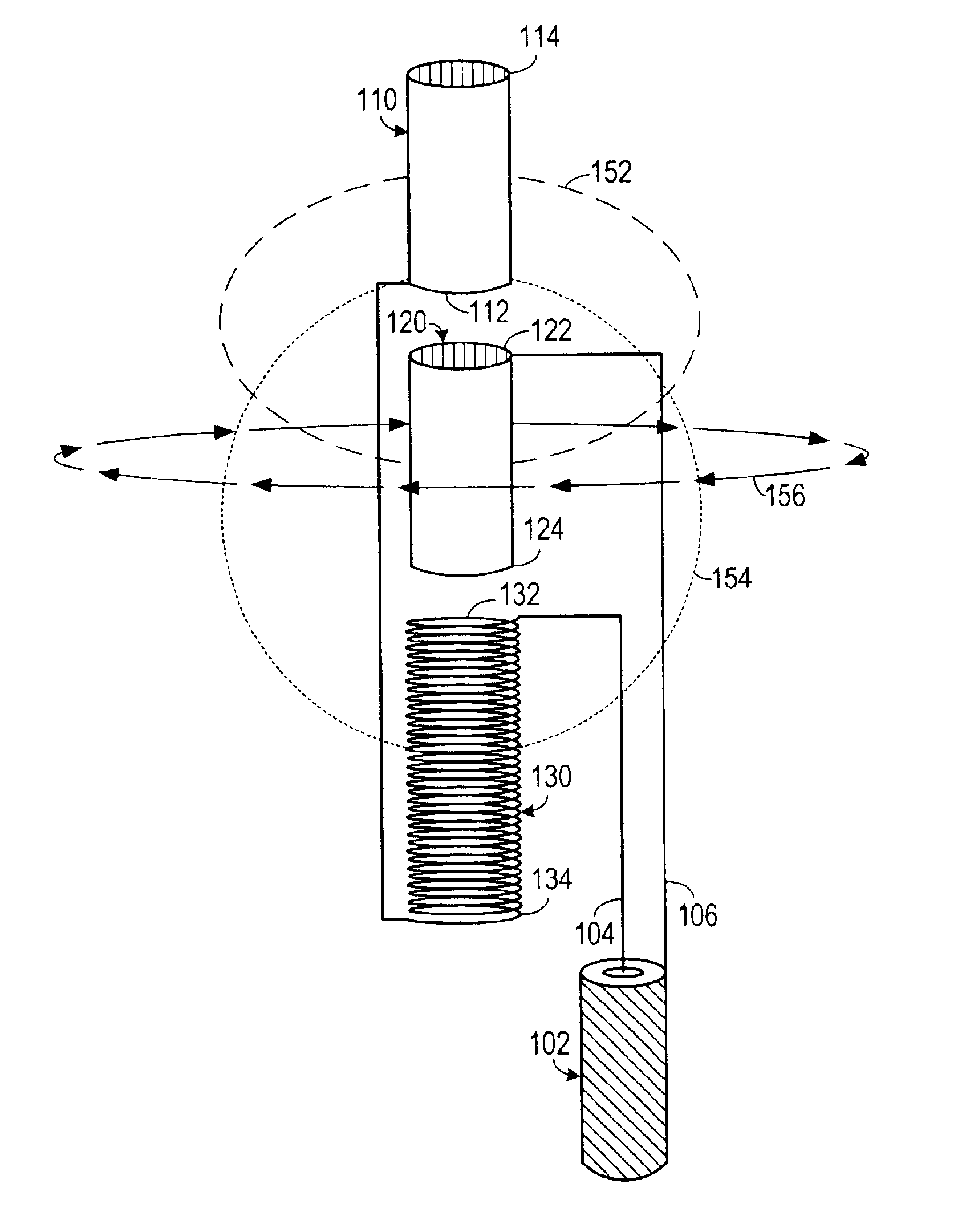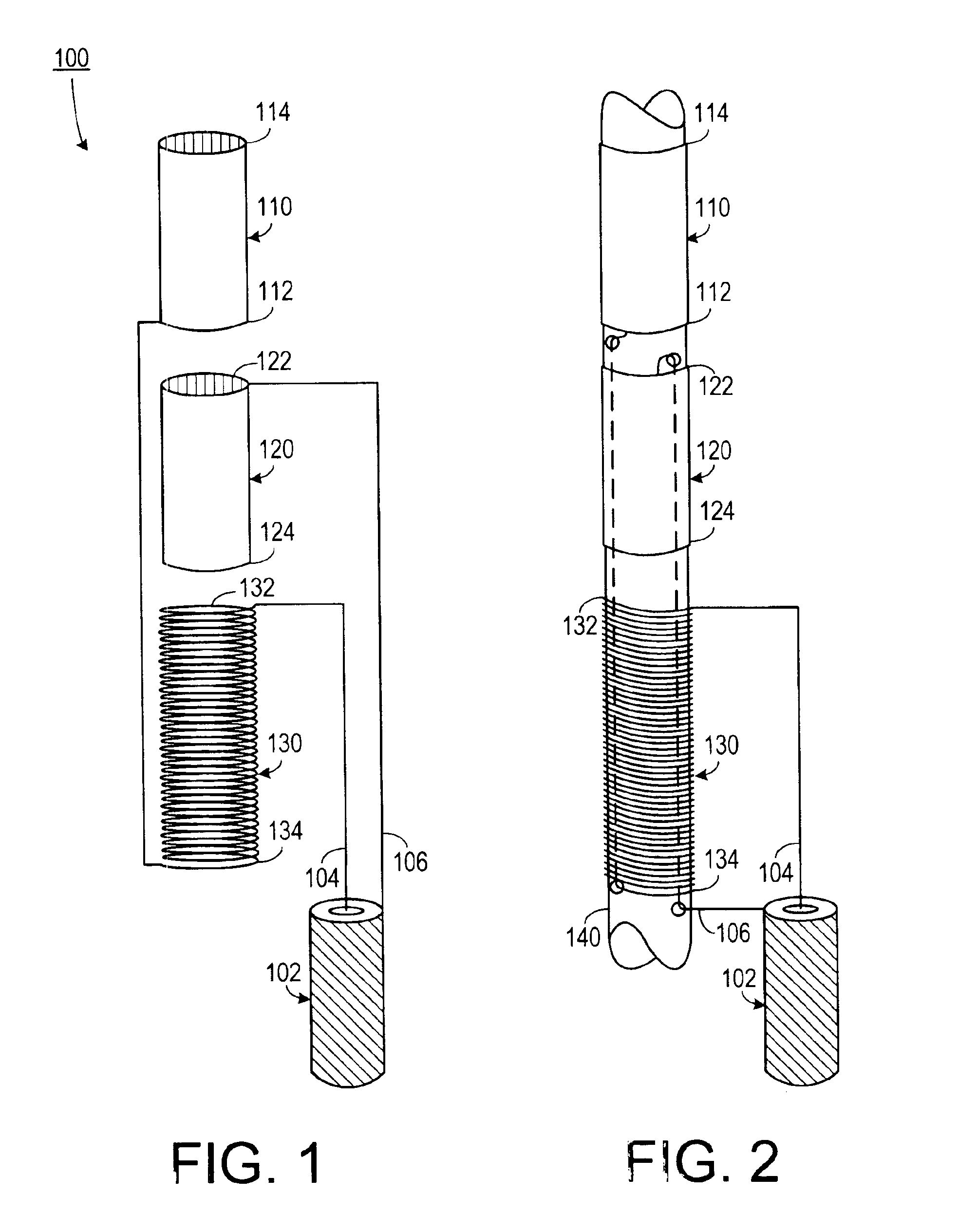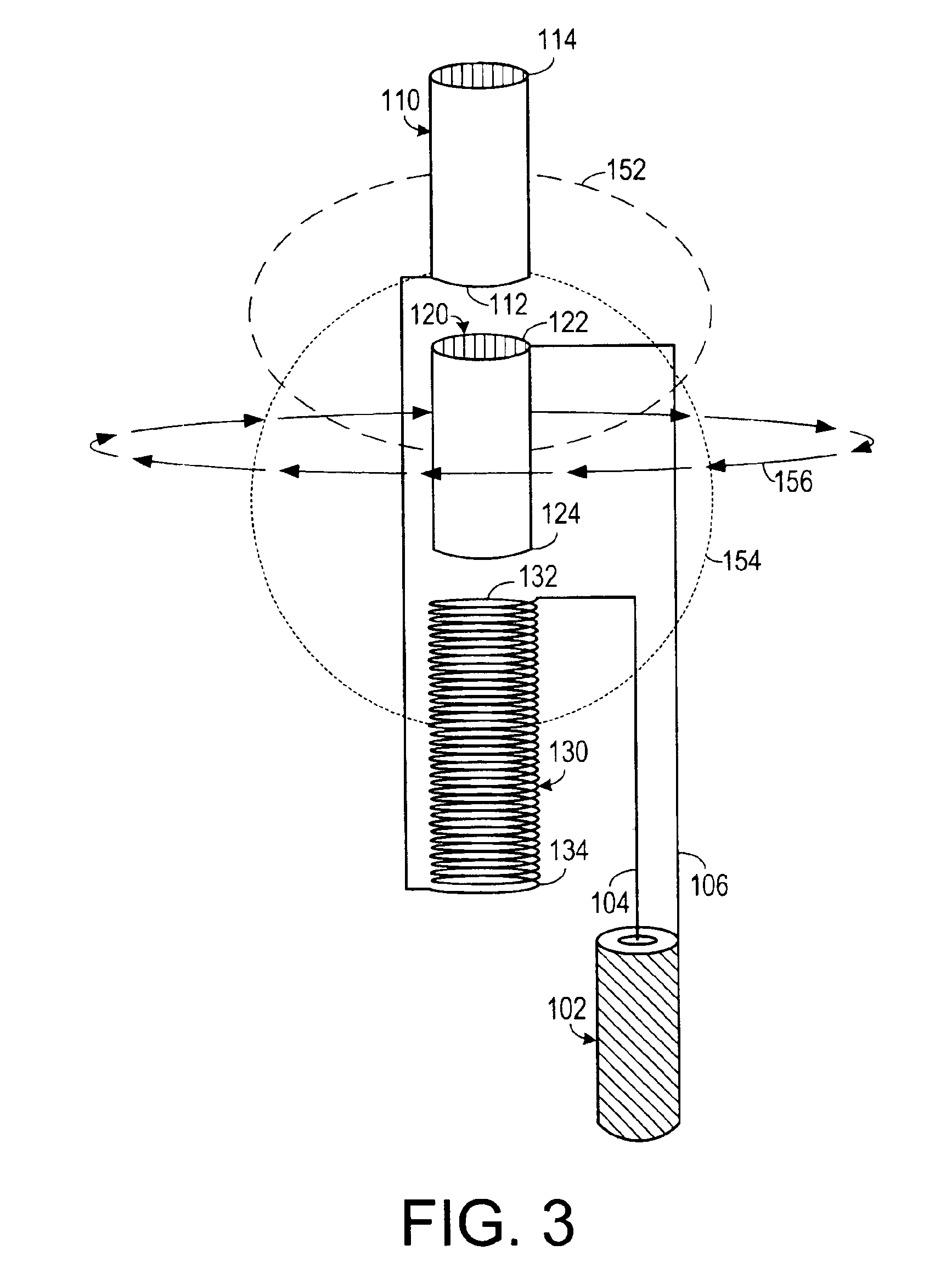Coaxial inductor and dipole EH antenna
a dipole eh, coaxial inductor technology, applied in the field of radio frequency communication, can solve the problems of requiring a complicated physical structure, typical wire antennas require a substantial amount of space, and cross-field antennas have the disadvantage of requiring complicated physical structures
- Summary
- Abstract
- Description
- Claims
- Application Information
AI Technical Summary
Benefits of technology
Problems solved by technology
Method used
Image
Examples
Embodiment Construction
[0018]A preferred embodiment of the invention is now described in detail. Referring to the drawings, like numbers indicate like parts throughout the views. As used in the description herein and throughout the claims, the following terms take the meanings explicitly associated herein, unless the context clearly dictates otherwise: the meaning of “a,”“an,” and “the” includes plural reference, the meaning of “in” includes “in” and “on.”
[0019]A general discussion of Poynting vector theory may be found in the disclosure of U.S. Pat. Nos. 5,155,495 and 6,025,813, which are incorporated herein by reference.
[0020]The concept of the invention is based on the Poynting Theorem, where S=E×H. If an E field and an H field are developed and they have the proper relationship in amplitude, time (phase) and physical relationship, radiation will be developed.
[0021]As shown in FIG. 1, one embodiment of the invention includes an antenna 100 for use with a signal cable 102 having a signal lead 104 and a ...
PUM
 Login to View More
Login to View More Abstract
Description
Claims
Application Information
 Login to View More
Login to View More - R&D
- Intellectual Property
- Life Sciences
- Materials
- Tech Scout
- Unparalleled Data Quality
- Higher Quality Content
- 60% Fewer Hallucinations
Browse by: Latest US Patents, China's latest patents, Technical Efficacy Thesaurus, Application Domain, Technology Topic, Popular Technical Reports.
© 2025 PatSnap. All rights reserved.Legal|Privacy policy|Modern Slavery Act Transparency Statement|Sitemap|About US| Contact US: help@patsnap.com



